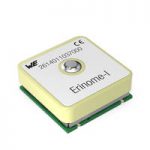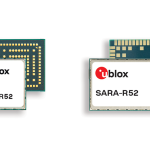Topcon Quartz Lock Loop (QLL) For Robust GNSS Operation
Topcon Quartz Lock Loop (QLL) For Robust GNSS Operation
All dynamic GNSS applications are subject to some degree of bumps, vibration and mechanical shock that can cause inaccurate measurements or complete satellite tracking failure due to impact on a receiver’s quartz crystal oscillator. In September 2012 Topcon Positioning Systems (TPS) announced the release of firmware v4.0 introducing Quartz Lock Loop™ (QLL) technology on all Topcon OEM GNSS platforms. This paper discusses the effects of vibration, acceleration and shock on GNSS integrity, how QLL mitigates the effects for robust operation in any dynamic condition and compares performance of two industry competitors during a comprehensive vibration and shock test.
Septentrio on GNSS Interference
Because GPS and other satellite navigation signalsare very weak signals, they are relatively vulnerable to interference — a phenomenon where other (unwanted) signals disrupt the satellite navigation signals, causing reduced accuracy, or even the complete inability of the receiver to calculate a position. This white paper describes the basics and different types of interference of GPS/GNSS signals, the effect on the operation of a GPS receiver, and the unique solutions Septentrio has developed to monitor and eliminate the effects of harmful interference.
u-blox Multi-GNSS Receiver Technology
GPS has been around for 30 years, becoming the global de facto standard for navigation and positioning. This situation is rapidly changing. To reduce or eliminate the reliance on the U.S.-operated GPS satellite network for both government and civilian navigation and positioning systems, Russia, China, and the European Union are deploying their own parallel GNSS systems. Japan has also started to deploy a satellite augmentation designed to improve GPS performance in Japan and areas of Southeast Asia and Oceania. To address this expanding array of new GNSS systems, u-blox has introduced low-power, multi-GNSS capability into its newest generation satellite positioning platform u-blox 7.
Anti-Jamming Techniques in u-blox GPS receivers
A critical factor when selecting components for a GPS system is the receiver’s immunity to external interference or “jamming.” The ability to lock onto typically faint GPS signals in the presence of noise generated from other electronic devices has a large influence on the system’s ability to provide correct location data. The use of an advanced, proprietary adaptive digital filtering technology allows the u-blox 5 and u-blox 6 GPS positioning engines to overcome jamming signals up to 25 dB stronger than conventional GPS receivers can withstand.
» More information from u-blox website





